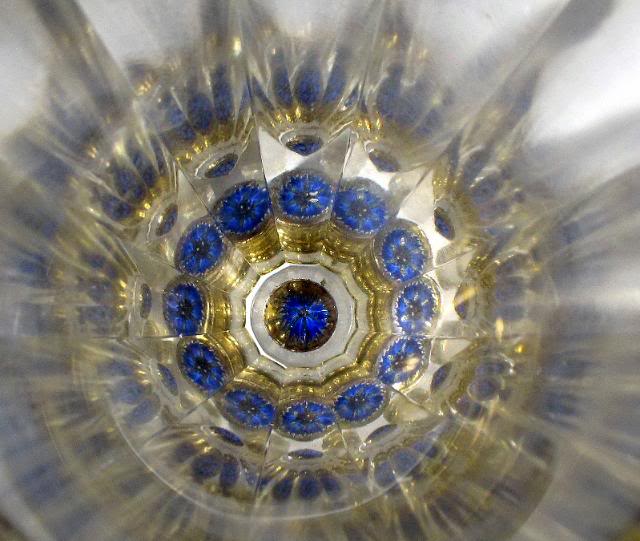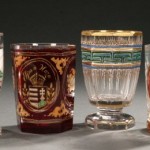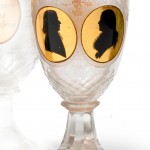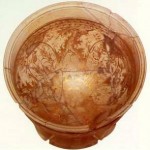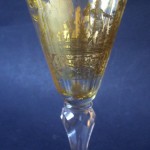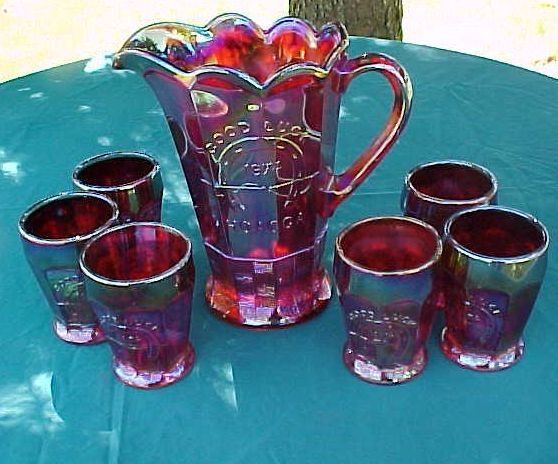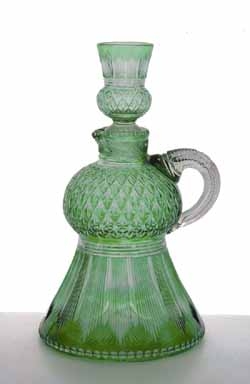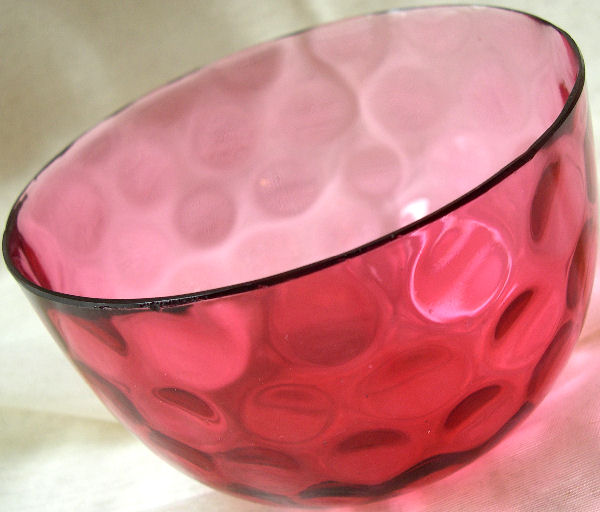Zwischengoldglas is a glassware technique in which gold foil is inserted between two glass panels. The pieces are designed to fit perfectly over each other, so that the gold appears to float in the glass. Zwischengoldglas is different from other styles in that the pieces are bonded with cement rather than fused together, as is common in Roman and Hellenistic gold glass. This made production fast and easy, which helped make it one of the most popular ornaments of its time.
The word Zwischengoldglas is German for “gold between glass.” The lamination technique has been in use since the 3rd century BC, although the first piece was made in Bohemia in 1725. It was only in the 18th century that decorative Zwischengoldglas was produced actively in Bohemia and Austria. Most of the surviving pieces were made from 1730 to 1755, and are considered among the most beautiful and valuable antiques.
The design is most commonly seen in glasses, beakers, goblets, and other decorative vessels. Often, the gold leaf is ornately cut or bears an intricate design. In some pieces the outer glass panel is engraved, or silver leaf is used in place of gold. Religious icons, hunting, war scenes, and heraldry are some of the most common themes.
Information and images – Andrew Lineham Fine Glass http://www.antiquecolouredglass.info

